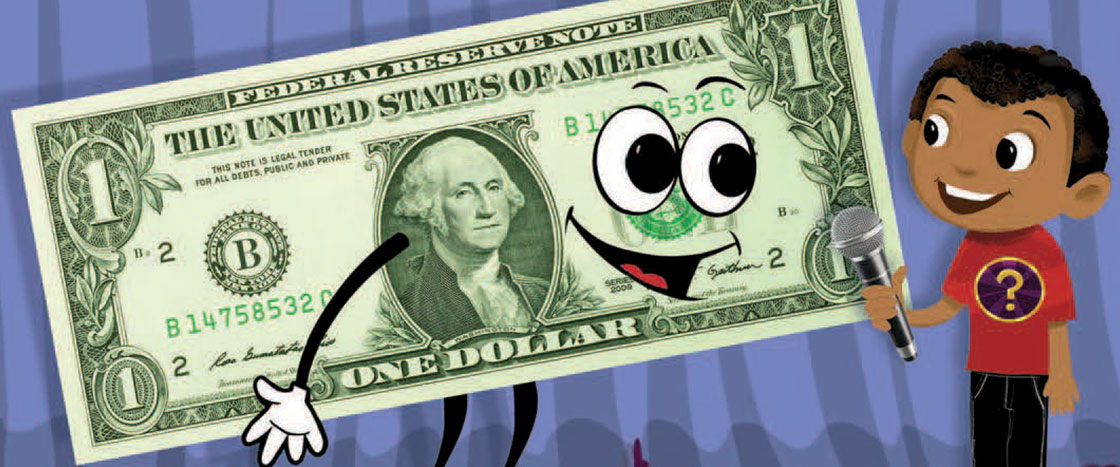CHARLES LEHMAN
Hi! I’m Question Mark.
Before you read, practice saying these words:
- billion
- George Washington
- president
- cotton

Our character Question Mark gets all the details about this famous American symbol.
CHARLES LEHMAN
Hi! I’m Question Mark.
Before you read, practice saying these words:
1) Question Mark: Hi! I am here with a dollar bill.
Dollar Bill: Hi, kid. You can call me Buck.
2) QM: OK, Buck. Why should kids know about you?
DB: I am money. You can buy stuff with me.
3) QM: How many dollar bills are there?
DB: There are a lot of us— more than 12 billion in the world.
4) QM: Wow! Who is on your front?
DB: That guy is George Washington.
5) QM: Was he our first president?
DB: That’s right, kid.
6) QM: What are you made of?
DB: I am made mostly of cotton, like a T-shirt.
7) QM: What happens if you rip?
DB: Take me to the bank. You can get a new dollar bill.
8) QM: Thanks, Buck. Let's go buy lunch.
More About the Article
Social Studies Focus
American symbols; Economics
Social-emotional Learning Focus
Cooperation (partner reading)
1. BEFORE READING
Preteach Vocabulary (4 minutes)
Introduce Question Mark and Pair Kids Up (5 minutes)
2. PRETEACH NAVIGATING THE PAGE (3 MINUTES)
3. READ THE INTERVIEW MULTIPLE TIMES (15-30 MINUTES)
ELA Focus: Comprehension (15 minutes)
Extension: Make a Microphone (20 minutes)
4. AFTER READING